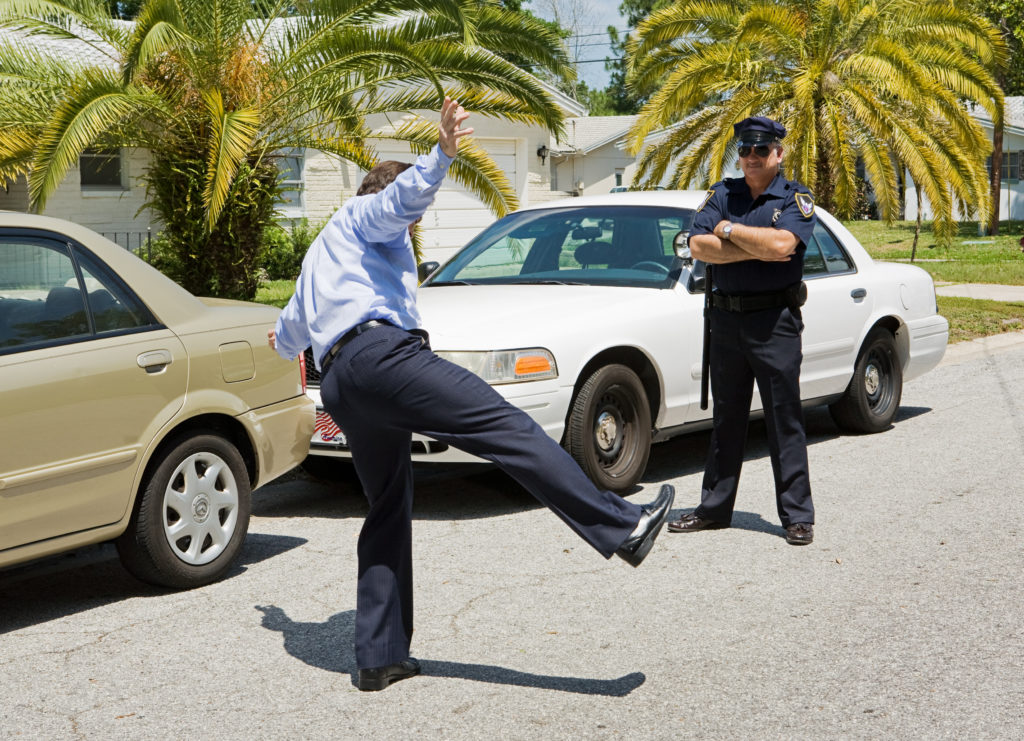Welcome back and thanks for joining us here at The Kronzek Firm, as we break down Michigan’s field sobriety test, also known as the world’s scariest pop quiz! In our previous article in this series we looked at the Horizontal Gaze Nystagmus (HGN) test and what that involves during a roadside sobriety test. Moving on we’re going to take a look at the next item in the average officer’s roadside arsenal: the ‘walk-and-turn’ test.
The Walk-and-Turn test (WAT)
This is another commonly used roadside sobriety test, sometimes called “walking the line.” A police officer asks a suspected drunk driver to take nine heel-to-toe steps, while watching their feet and counting the steps out loud. Once you reach the ninth step, you are asked to pivot and take another nine steps back to your starting point. It may sound simple, but this one can be tricky even for sober people!
This type of test is called a divided attention test. That means the officer is asking you to perform several tasks at the same time, and you have to get them all right without messing anything up. Think about it … walking, counting, balancing, turning, these are all individual things that you have to focus on, and if you’re three sheets to the wind, that’s probably not going to happen. Why? Because when someone consumes alcohol, the part of their brain that deals with multitasking (the striatum) isn’t able to function properly.
According to the National Highway Traffic Safety Administration, when an officer instructs you to do the walk-and-turn test, there are eight specific things he will be looking out for:
- Whether or not you can keep your balance while listening to him giving you instructions.
- If you have to pause during your walk in order to regain your balance
- If you start walking before the officer has finished giving you instructions
- Whether or not you actually touch the heel of one foot to the toe of the other foot when taking your next step
- If you put our arms out to help you balance while walking
- If you step off the line, or stumble while placing your feet
- Whether or not you count your steps properly, or take an incorrect number of steps
- If you make an improper turn.
It may not sound like a complicated process – take nine steps, heel to toe, then turn and do it again, but for the intoxicated brain it can be a lot to handle. Too much, in fact. If you’ve had several drinks, your brain isn’t going to be functioning optimally, which means that multitasking is going to be considerably harder. During the walk-and-turn test, the cop will be checking closely to see if you are having a hard time with the actions you’ve been asked to perform, as well as following instructions.
If you seem to be struggling with either aspect of the test, the officer will likely assume that you are intoxicated, which could lead to adorning shiny bracelets on both hands and getting a free ride to the county’s version of the Holiday Inn. However at their lodging facility, there is no pool, no room service and the food isn’t so tasty. Attorney John M. English, an expert in FST (field sobriety testing) reminds you that you are not required to do any field sobriety tests. In many cases, it is best that you politely decline to do so if you have been drinking at all.
Join us next time for the next step in this series on roadside sobriety tests, where we will be looking at the one-leg-stand test and the Rhomberg balance test. Until then, if you or a loved one have been accused of driving under the influence of alcohol, or have been arrested for drugged driving, call The Kronzek Firm immediately at 866 766 5245. Our highly skilled drunk driving defense attorneys have decades of experience protecting the people of MIchigan against drunk driving charges. We are here to help you.




